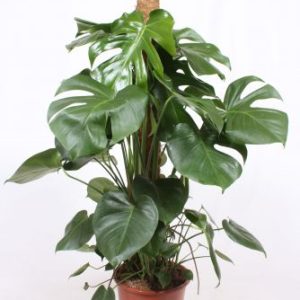Description
Washingtonia palm refers to two species of palms native to the southwestern United States and northwestern Mexico: Washingtonia filifera, commonly known as the California Fan Palm, and Washingtonia robusta, commonly known as the Mexican Fan Palm. Both species belong to the Arecaceae family and share similar characteristics, although they have some distinct differences.
Here are some key features and characteristics of Washingtonia palms:
- Appearance: Washingtonia palms are tall, slender palm trees with a single, smooth trunk that can reach heights of up to 80-100 feet (24-30 meters) or more in ideal conditions. The trunk is grayish-brown and slightly swollen at the base. Atop the trunk sits a large crown of fan-shaped leaves that radiate out in a circular pattern. The leaves are dark green and divided into numerous segments, giving them a feathery appearance.
- Habitat: Washingtonia palms are native to arid and semi-arid regions with warm climates. Washingtonia filifera is found primarily in desert oases and canyons in California, Arizona, and Baja California, Mexico, while Washingtonia robusta is native to the coastal regions of northwestern Mexico. Both species are well-adapted to hot, dry conditions and are often planted in urban landscapes, parks, and gardens in Mediterranean and subtropical climates worldwide.
- Flowers and Fruits: Washingtonia palms produce large, branching inflorescences emerging from among the leaves. The flowers are small and cream-colored and are followed by round, black fruits containing a single seed. However, Washingtonia palms are monocarpic, meaning they die after flowering and fruiting, although they typically produce numerous offshoots (suckers) that can grow into new trees.
- Cultural Significance: Washingtonia palms are highly valued for their ornamental beauty and are commonly planted as street trees, shade trees, and landscape specimens in urban areas. They are also associated with the iconic landscapes of Southern California and are often featured in movies, television shows, and advertisements depicting the region’s scenery.
- Propagation: Washingtonia palms are typically propagated from seeds, which can be collected from mature fruits and planted in well-draining soil. The seeds may take several months to germinate, and the young palms require warm, sunny conditions to thrive. Alternatively, offshoots (suckers) can be removed from mature trees and replanted to propagate new palms.
Overall, Washingtonia palms are prized for their graceful appearance, resilience, and cultural significance, making them a beloved and iconic palm species in urban landscapes and tropical gardens worldwide.
Reasons to buy from Plantssouq
– Fast Delivery
– Whatsapp Us On :0566670322 Dubai
- – Support 24/7 :
* Phone/whatsup:0566670322
* Email : [email protected]






Reviews
There are no reviews yet.